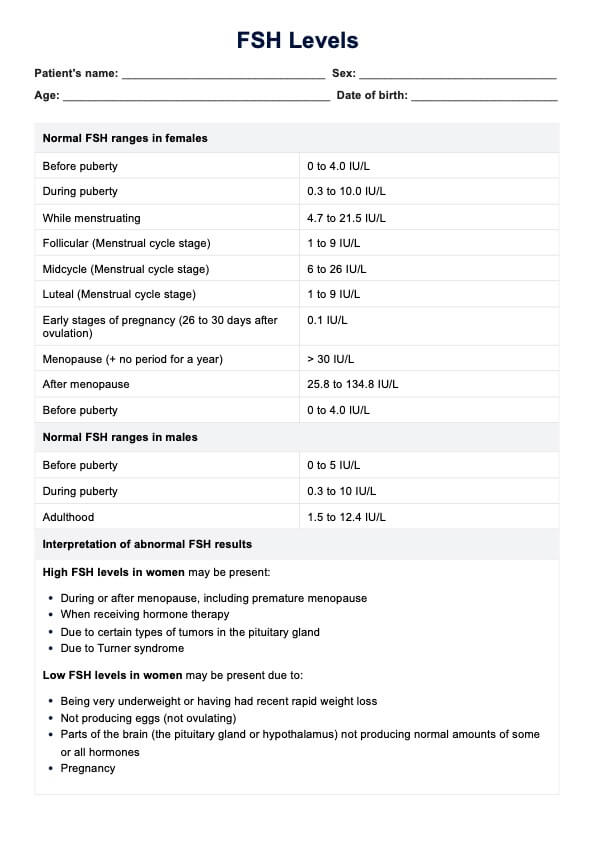Healthcare practitioners, including general practitioners, endocrinologists, gynecologists, and urologists, typically use an FSH Levels Chart.

Ensure you have a copy of the FSH Levels Chart to assist you with accurately analyzing and interpreting FSH results from a hormone blood test.
Healthcare practitioners, including general practitioners, endocrinologists, gynecologists, and urologists, typically use an FSH Levels Chart.
FSH level charts are used when the patient has concerns, or the referring physician has a suspicion of issues regarding the patient’s menopause stages, menstrual cycle, fertility, and pregnancy.
FSH-level charts can be used as an educational resource, guide, reference, or even a document where the referring physician can record the patient’s FSH test results and corresponding interpretation.
EHR and practice management software
*No credit card required
Free
$0/usd
Unlimited clients
Telehealth
1GB of storage
Client portal text
Automated billing and online payments